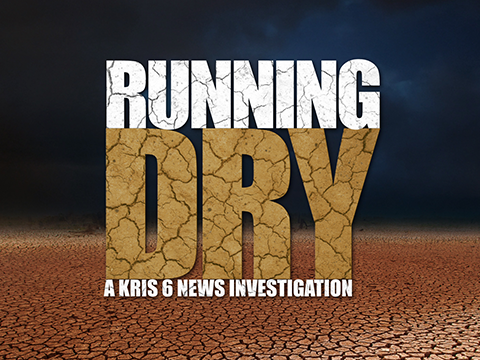CORPUS CHRISTI, Texas — Strange-looking buoys have washed ashore on Coastal Bend beaches. They are not hazardous, though it is important to send them back where they belong.
Jace Tunnell at the University of Texas Marine Science Institute has been the one finding these devices.
“Sometimes we feel like an investigator out on the beach. Trying to figure out where all these items are coming from,” Tunnell said.
Earlier this year, Tunnell and a team of volunteers from the UT Marine Science Institute were looking for nesting turtles along North Padre Island and Matagorda Island, when they came across these buoys of different shapes and sizes.
“It's debris out in the ocean that gets washed up. Unless we turn it back in, it's just going to stay debris. We consider it a treasure,” said Tunnell.
This yellow, basketball-sized buoy, covered in barnacles, doesn’t look as important at first glance, but you wouldn’t believe the journey it's been through and the information it's collected along the way.
California-based company Sofar Ocean is responsible for deploying buoys all around the world, including the Gulf of Mexico.
This week, they left Port Aransas to deploy two buoys that will be anchored to the bottom of the ocean.
Isabel Houghton is a data scientist at Sofar Ocean. She will be observing the information those buoys gather in real-time.
“Every hour we’re getting data from our 600 buoys distributed throughout the global oceans. We’re getting observations of sea surface temperature, barometric pressure, and how high the waves are, what direction the waves are coming from, and how long the waves are,” she said.
These buoys send back all this information through satellite connection.
“We use those observations to improve our forecast and provide more accurate predictions of maritime weather conditions,” said Houghton.
Sofar Ocean is hoping these buoys can help predict where a hurricane will make landfall three to five days in advance.
With 10 or more buoys in the Gulf of Mexico, Houghton is optimistic that the data collected can help measure a storm's potential impact on the coastline.
“Being able to provide accurate predictions with enough time for people to make informed decisions is really our ultimate goal,” Houghton said.
To achieve this goal, Sofar Ocean buoys should be in the water gathering observations, not on shore.
After contacting Sofar Ocean, Jace Tunnell packed up what he found and shipped the buoys back to California.
The company will return them to the water, giving them a second life, working to improve forecasting abilities.




